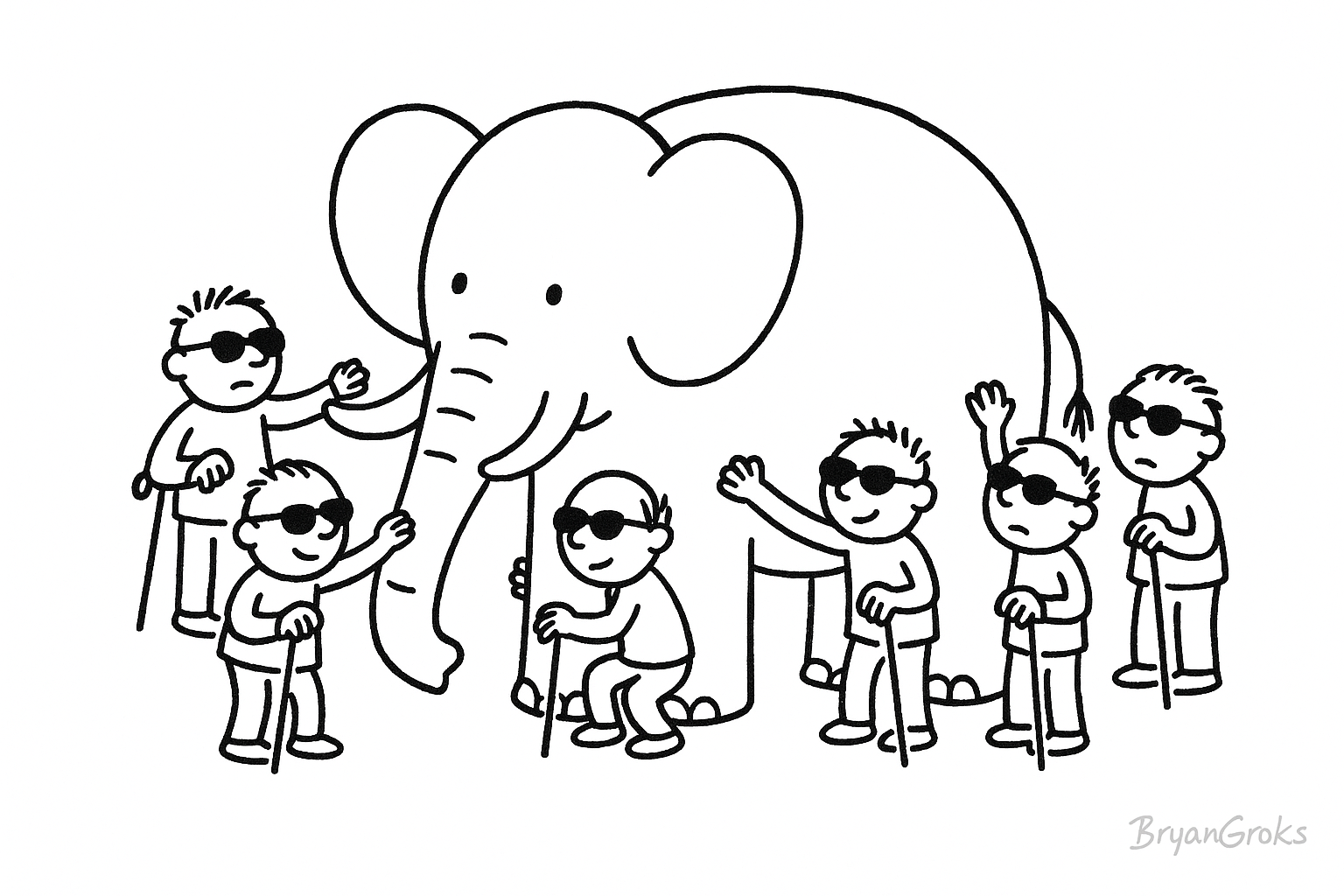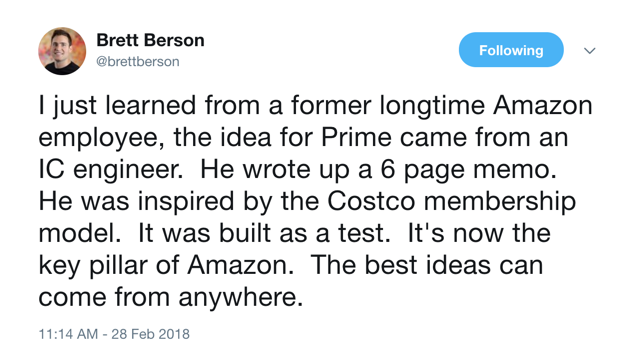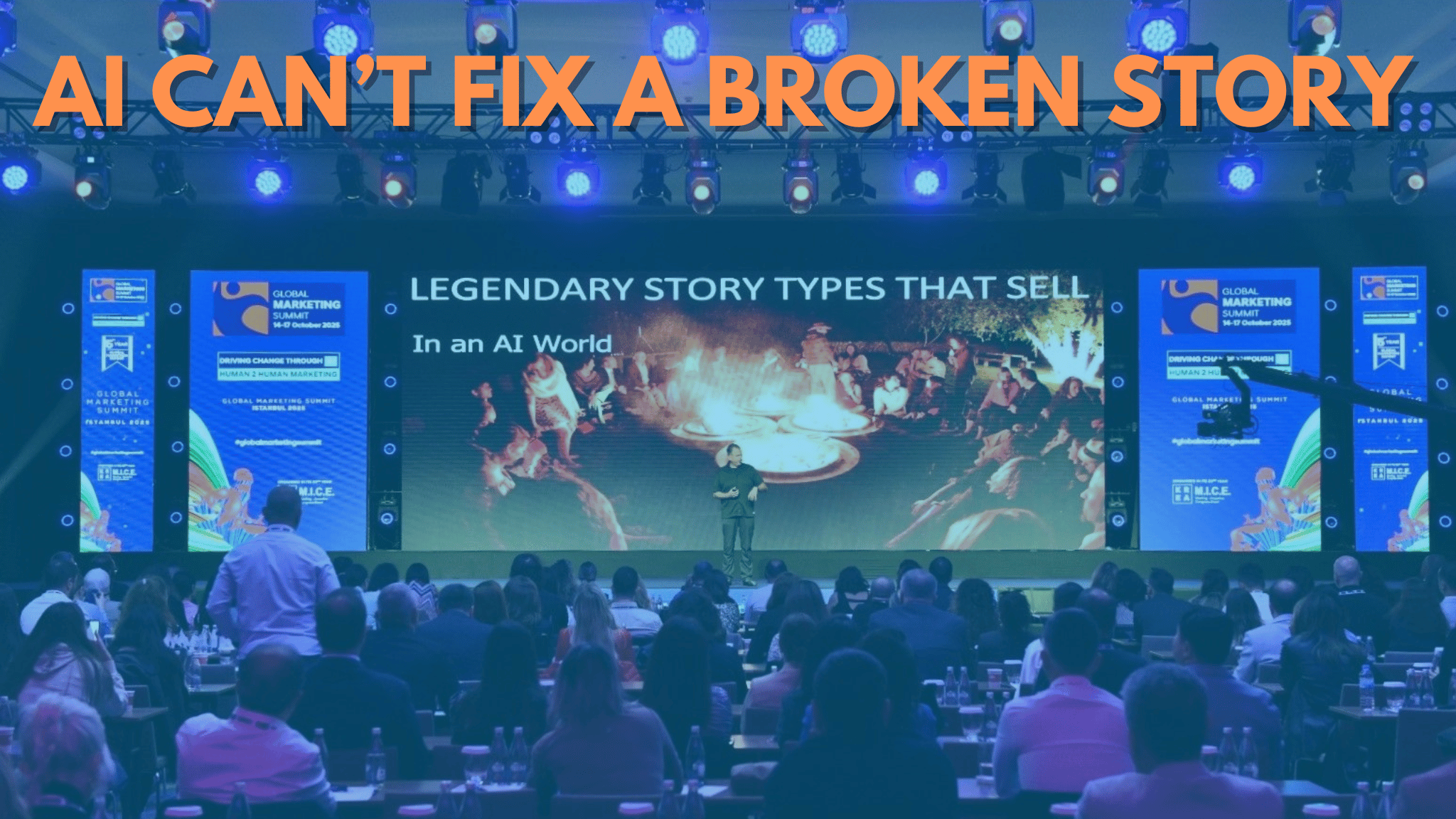Even the most intelligent AI can’t fix a broken story. And it can’t replace a team that doesn’t believe the same thing. After thirty years helping companies optimize conversions and build persuasive systems, we’ve seen one truth show up again and again:
The right message always wins.
Not the best product. Not the largest budget. The message that makes sense in the customer’s world.
However, most companies don’t have a single story. They have six.
- Sales tells one version.
- Marketing has another.
- Customer service shares something completely different.
- Leadership pitches a new vision each quarter.
- Products build what they believe the market wants.
- And operations is just trying to keep it all together.
Everyone thinks they’re right. Each department clings to its version of the truth. But the customer? They’re stuck hearing all of it.
It’s like the six blind men and the elephant, except in this case, the elephant is your customer. And they’re the one who walks away confused.

Misalignment Costs More Than You Think
We’ve worked inside companies where every department claimed to be customer-centric: the product lead, the marketing director, the sales VP, even the CFO.
But their definitions didn’t match. Their metrics clashed. And their language never lined up. That internal confusion didn’t stay internal. It showed up in the messaging. It showed up in the sales calls. It appeared in support tickets and customer reviews.
Customers didn’t understand what the brand stood for. They didn’t know what problem it solved. And they stopped caring. Because customers don’t buy your strategy, they buy the story they feel. They buy what makes emotional sense. They buy what fits into their world.
Amazon Didn’t Start With AI. They Started With Alignment.
In the early 2000s, Amazon banned PowerPoint in executive meetings.
They didn’t do this for flair. They did it because slide decks conceal genuine thought. Bullet points can’t show nuance. Pie charts don’t reveal flawed logic. But stories do.
So they replaced PowerPoint with written narratives. Six pages. Structured like a story and reviewed silently, together, at the start of each meeting. The idea was simple. If you couldn’t explain your plan clearly in writing, you didn’t understand it clearly enough to execute it.
This practice changed the way Amazon teams communicated. It built a culture that aligned around customer needs, not internal jargon. It forced clarity. It revealed gaps.
It ensured that decisions didn’t get lost in translation between departments. They didn’t need better slides. They needed shared belief.
That belief, that culture, not technology, helped Amazon scale with consistency.

The Elephant I Swallowed
Years ago, I joked that I’d swallowed an elephant. It wasn’t really a joke.
At 277 pounds, I felt heavy. Not just physically. Mentally. Emotionally.
I had helped companies grow by breaking big goals into small, consistent actions. But I wasn’t applying any of that to myself.
The problem wasn’t knowledge. It was alignment. I believed one thing, but acted in another way. Most people know what they need to do to lose weight, but their story holds them back. And that gap created friction I couldn’t ignore anymore. In my 30s, I lost over 100 pounds.
Last July, a health scare finally made me seriously revise the story I was living. The weight was creeping back up, and my blood sugar was 3x the normal level. I thought walking 9000+ steps a day and eating a plant-based diet of mostly unprocessed foods was enough. I didn’t need another diet. I needed a system that aligned my beliefs with my behavior.
That shift changed everything. I lost 50 pounds. My energy came back. I began thinking more clearly, devising better solutions, and leading effectively. That change didn’t come from tools. It came from alignment.
AI Can’t Believe for You
AI can write clever emails. It can test headlines faster than your team can finish a meeting. It can even mimic your brand tone across platforms.
But it can’t fix a broken story.
It definitely can’t align a fractured team. It can only scale what you’ve already decided. If your internal message is a mess, AI will amplify the confusion. If your departments aren’t aligned, AI won’t fix that. It will just spread the misalignment more efficiently. Technology can assist. But belief has to lead. You need alignment around your customers’ story.
So, What Story Is the Customer Actually Buying?
It’s not the one in your brand guidelines. It’s not the one you practiced before the pitch meeting. It’s the one your customer feels when they interact with your product, your people, and your content. That story is either helping them move forward or pushing them away.
So instead of asking, “What’s our story?” Ask, “What story are we helping the customer believe?” If your team doesn’t believe it together, your customer won’t believe it either. And confused customers don’t convert.
Clarity doesn’t come from more content. It comes from a shared story. One told from the inside out. That’s what AI can’t create.
That’s what only aligned teams can build. And when they build it, legends are built.

